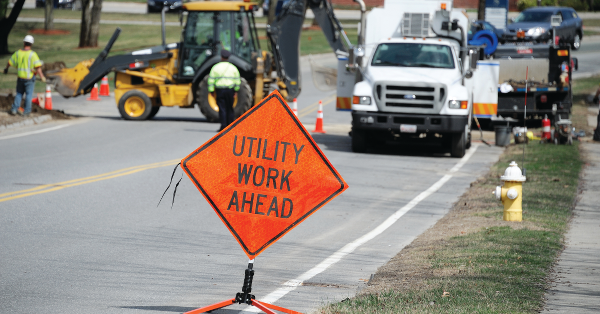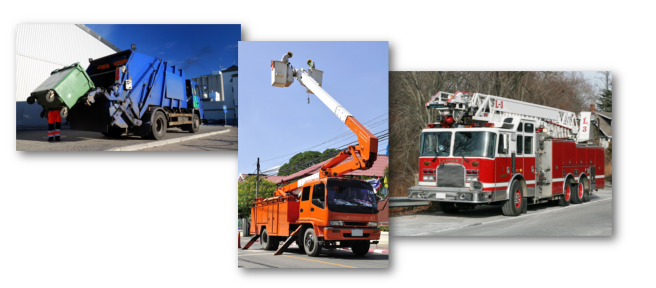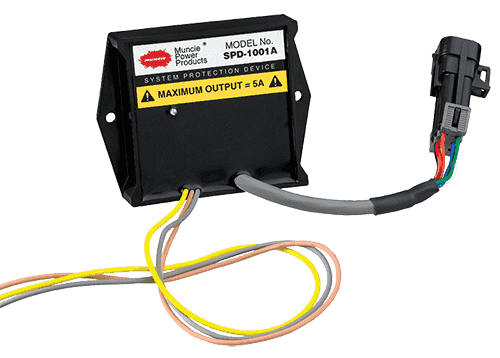Protect Your Equipment
November 26, 2018
Whitney VanKlaveren – Marketing Communications Coordinator
A system protection device—the solution allowing you to focus on the application before you with the assurance that your equipment is being protected.
Focusing on the Job, Neglecting the Equipment

Operator Focus
Oftentimes, work trucks are used within situations that require the complete focus of the operator to ensure the application or job, is performed correctly, efficiently, and safely. The problem with this is that with all of the operator’s focus diverted to the application, or job, zero focus is being given to the actual equipment itself.
When this happens, the highest percentage of damage to the equipment occurs because the focus isn’t being given to ensuring that the power take-off, clutch pump, or dry valve pump is operating within the set parameters or set points to engage and disengage for optimal efficiency. Operating outside of these set parameters results in damage to the power take-off, clutch pump, or dry valve pump, at the very least, but can subsequently extend to the equipment as a whole. As the components are connected, damage to the power take-off, clutch pump, or dry valve pump doesn’t necessarily remain contained or isolated within the single component.
Consequences
Failing to control or monitor the parameters of your clutch shift power take-off, clutch pump or dry valve pump can cause damage to these components, subsequent others, and the hydraulic system. This ultimately results in damage to the equipment. Some potential damages resulting from a lack of control or monitoring of the power take-off, clutch pump, or dry valve pump can include the power take-off or pump exceeding maximum speeds, over-pressurized cylinders, bent cylinder rods, and accidental activation of devices not needed for example.
When damage occurs due to a lack of focus and set parameters in place, it compromises the safety of the equipment, operator, and those potentially within close proximity. In addition to safety concerns, the damage to the hydraulic system and its components results in truck downtime in order to replace or fix the equipment. This could be fairly extensive depending on the damage that has occurred. Consequently, the operator or owner could be looking at a high price tag to fix the equipment, which could have been avoided with a system protection device.
Why System Protection Devices Matter
System protection devices like Muncie Power Products’ SPD-1001, for example, control or monitor a clutch shift power take-off, clutch pump, or dry valve pump to protect the entire system. The SPD-1001 protects the equipment as a whole by offering overspeed protection and limiting usage of electrically controlled systems of the power take-off, clutch pump, or dry valve pump based on set parameters for efficient operation.
In this way, the operator is able to focus on the job and rest assured that the power take-off, clutch pump, or dry valve pump is being controlled by the device to protect the equipment. This also promotes greater safety for the operator and those within close proximity of the equipment.
Where System Protection Devices Are Suited

Typical Applications
- Auxiliary Power Units (APUs)
- Cranes
- Dump Bodies
- Wreckers
Applicable for Equipment for
- Agriculture
- Aircraft Ground Support
- Construction Industry
- Refuse Industry
- Snow and Ice Removal
- Stationary Hydraulic Systems
Monitoring
A system protection device has the ability to monitor the power take-off, clutch pump, or dry valve pump and can be activated by a number of potentially damaging conditions in order to protect the equipment. Systems like Muncie Power's SPD-1001 not only have the ability to monitor engine speeds in regards to the PTO, clutch pump, or dry valve pump but can also be activated by conditions such as:
- Vehicle Speed
- Temperature Signals
- Pressure Signals
- Position Indicators
- Brake Interlock
- And More
SPD-1001 System Protection Device
 The SPD-1001 system protection device offers overspeed protection of a clutch shift power take-off, clutch pump, or dry valve pump by limiting the maximum high-speed engagement of the PTO or pump to protect the clutches. Muncie Power’s device also has the ability to serve as an interface for a wide range of interlock devices and can limit the usage of electrically controlled systems based on interlocks such as truck speed, engine RPM, outrigger position, brake activation, etc.
The SPD-1001 system protection device offers overspeed protection of a clutch shift power take-off, clutch pump, or dry valve pump by limiting the maximum high-speed engagement of the PTO or pump to protect the clutches. Muncie Power’s device also has the ability to serve as an interface for a wide range of interlock devices and can limit the usage of electrically controlled systems based on interlocks such as truck speed, engine RPM, outrigger position, brake activation, etc.This includes input of the truck speedometer signal with the SPD-1001 so that a PTO, clutch pump, or dry valve pump is automatically disengaged should the vehicle exceed the set MPH limit. The SPD-1001 can limit the highest operating speed of the equipment to protect system components like PTOs, pumps, cylinders, etc., or establish a maximum hydraulic flow as well.
Muncie Power’s SPD-1001 features designs for 12- or 24-volt systems with less than a five amp circuit and 12-volt-high and 24-volt-high amp systems greater than five amp. Muncie Power recommends using the R terminal, or Relay, on the alternator as the source of input as opposed to the pulse generator as it is the most reliable.
This device comes equipped with a programmable microprocessor. Before using the SPD-1001 system protection device determine how the device will be used, as it will impact the installation, programming, and operation.
While virtually any piece of equipment operated via a clutch-shifted power take-off or incorporating the electrical activation of a piece of equipment can use Muncie Power’s SPD-1001 system protection device, the SPD-1001 is designed for use with clutch shift PTOs, clutch pumps, and dry valve pumps only.
Note: Mechanical power take-offs designed with an electrical activation option cannot be used with the overspeed protection device.
Popular for Owners and Managers
The SPD-1001 is popular for truck and fleet owners and managers because the device allows for the engage and disengage set points of the power take-off, clutch pump or dry valve pump to be inputted. With the system’s design, it is tamper-resistant. This means it’s resistant to operator alteration so that the window of efficient operation (range between engage and disengage set points) cannot be changed in an effort to get work done faster, etc., and potentially cause damage.
Features
- Solid-state Construction: Rugged with no moving parts
- Tamper-resistant: Prevents alteration by operator
- Versatile: Accepts a variety of inputs
- Sense RPM: Vehicle CPU, alternator, or magnetic pick-up does not require a different unit
- Sense MPH: Change to the limit that suits the application without changing units, which offers more types of system protection than the RPM-only switch
- Add Safety Interlock: Easily added interlocks allow the system to be shut down during an overspeed condition or if a limit switch is activated*
- Built-in Circuit Protection: Unit shuts down if the current load exceeds the limit and can be reset by turning the system off and back on
- Microcontroller: Easy to program, requires no special tools, and reliable
- Unique Design: Incorporates unique design for operating PTO and pump solenoid valves, letting them run cooler and minimizing the principal cause of coil failure
- Voltage Sensing: Works on 12 and 24 VDC systems
- Easy Replacement: Similar wiring to EOS products
- Sealed Components: Mountable in the cab or engine compartments
*Switches not included with the unit.
Determining the Window of Operation
When setting the engage and disengage set points of the power take-off, clutch pump, or dry valve pump with the SPD-1001 consider the following:
- Set the engagement point less than 1,000 RPM (900 RPM is popular for the engagement set point)
- Ensure the engage set point isn’t too close to idle (unless the engine is warmed up, the RPM can fluctuate and cause the power take-off to disengage)
- Determine the disengage set point based on the power take-off output shaft speed (below 2,500 RPM) and application requirements for system efficiency
- Power take-off ratio determines how fast the engine can turn and not disengage the power take-off
RELATED ARTICLES:


